Claiming SEIS/EIS Tax Relief: A Founder’s Guide

Written by:
Daniel Scott
Partner & Head of Accounting
Claiming SEIS/EIS Tax Relief: What Your Investors Need from You
Raising under SEIS or EIS is a powerful way to attract investors. Founders tend to focus on the front end of the process, securing advance assurance and filing compliance statements, but it doesn’t end there. To keep your backers happy, you need to help them actually claim their tax relief.
Investors commit to SEIS and EIS because of the generous tax breaks. If those reliefs are delayed or denied due to missing paperwork or errors, trust quickly evaporates. In this episode of our Startups, Shares & SEIS series, we’ll look at how investors claim their reliefs, what you need to provide them, and the common mistakes to avoid.
How Do Investors Claim SEIS/EIS Relief?
Once HMRC approves your compliance statement, you’ll be authorised to issue SEIS3 or EIS3 certificates. These certificates are the official documents investors must have to unlock their tax relief. Without them, no matter how eligible the investment may be, HMRC will not process a claim.
The reliefs themselves are wide-ranging. The most immediate is income tax relief: 50% for SEIS and 30% for EIS. An investor who puts £20,000 into a SEIS round can reclaim £10,000 against their income tax bill for that year. Under EIS, the percentage is lower but the investment limits are far higher, allowing significant amounts of capital to flow into a company. Importantly, investors can also carry that relief back to the previous tax year, which can be a useful planning tool.
There are also significant Capital Gains Tax (CGT) advantages. Shares held for at least three years under SEIS or EIS are free from CGT on disposal. In addition, there are reinvestment and deferral reliefs that allow investors to either reduce gains from other disposals or push their tax liability into the future.
Finally, the schemes also protect the downside. If the company doesn’t succeed, investors may claim loss relief, offsetting the loss against income or capital gains. This makes SEIS and EIS particularly attractive for higher-risk early-stage investments, as investors are never fully exposed to the downside.
Most claims are made through the investor’s self-assessment tax return, but in some cases employees under PAYE can request an adjustment to their tax code once they hold a certificate, letting them access the relief sooner.
What Do You Need to Provide?
Your role as a founder is to make sure investors receive their SEIS3 or EIS3 certificates promptly and accurately. Each investor, and each subscription of shares, must have a certificate. These can only be issued after HMRC has approved your compliance statement.
Accuracy is essential. The information on the certificates — share classes, subscription amounts, number of shares issued, and the date of issue — must match your compliance statement and your Companies House filings. Even small inconsistencies can cause HMRC to query a claim, leading to frustrating delays.
Timeliness matters just as much. Many investors are keen to claim relief within the same tax year as the investment, or to carry it back to the previous year. If certificates are delayed, so is their ability to claim relief. This can create cash flow pressure for them and weaken your reputation as a founder. A smooth process demonstrates professionalism and builds long-term confidence.
It’s also important to maintain proper records. Keep a clear log of which certificates have been issued, when they were sent, and any corrections made. That way, if HMRC or an investor queries the paperwork months later, you can answer quickly and confidently.
Common Pitfalls to Avoid
The biggest pitfall is delay. Some founders focus so heavily on closing the round that compliance slips down the list. Investors left waiting months for certificates are unlikely to feel enthusiastic about backing you again.
Another common issue is inaccuracy. Errors in dates, amounts invested, or share numbers are enough for HMRC to reject a claim. Each correction means further correspondence and further delays.
A subtler but still important pitfall is around carry-back claims. Some investors will want to use their relief in the prior tax year. The certificate has a section that allows this to be indicated, but if it’s overlooked or filled incorrectly, that flexibility is lost.
Finally, there’s the problem of poor tracking. If you don’t keep a record of which certificates were issued and when, it becomes very difficult to resolve disputes later on. A simple spreadsheet or tracking system is often enough, but it needs to be kept up to date.
Frequently Asked Questions
What’s the difference between advance assurance and the compliance statement?
Advance assurance is HMRC’s indication that your company
should qualify, based on your plans, before you issue shares. The compliance statement is your proof afterwards that you did meet the rules. Both are essential if your investors are to claim relief.
Can investors claim relief without a certificate?
No. Certificates are the official proof HMRC requires. Without them, no relief can be claimed, even if the investment qualifies.
How long does it take for investors to get their relief?
That depends on how quickly you file the compliance statement and issue certificates, and how efficient HMRC is. Well-prepared filings can result in certificates being issued within a couple of months; poorly prepared or inconsistent filings can drag on much longer.
Can investors split their relief across tax years?
Yes, relief can be carried back to the previous tax year, provided the investor had sufficient income tax liability in that year. This is one of the reasons timeliness is so important.
What happens if a certificate has an error?
You’ll need to reissue a corrected version. HMRC may cross-check it against your compliance statement, so accuracy upfront is far better than dealing with corrections later.
Why This Matters
Investors back early-stage companies partly for the growth opportunity, but largely because SEIS and EIS reduce their personal risk. If the relief process goes smoothly, it builds trust and positions you as an organised, credible founder. If it doesn’t, confidence erodes quickly and that makes future fundraising harder.
Helping investors access their relief is not just compliance; it’s part of the relationship you’re building with them. Do it well, and you increase the chances they’ll reinvest when you raise again.
How We Can Help
At OnTheGo Accountants, we support founders at every stage of the SEIS/EIS journey from advance assurance through compliance and onto investor relief. We’ll make sure your certificates are accurate, issued promptly, and fully compliant with HMRC’s requirements.
If you’d like us to handle the process or just review your compliance before you send it get in touch at info@onthegoaccountants.co.uk.
Next in the series:
Founders with Multiple Companies — Navigating the Risk of Disqualification





